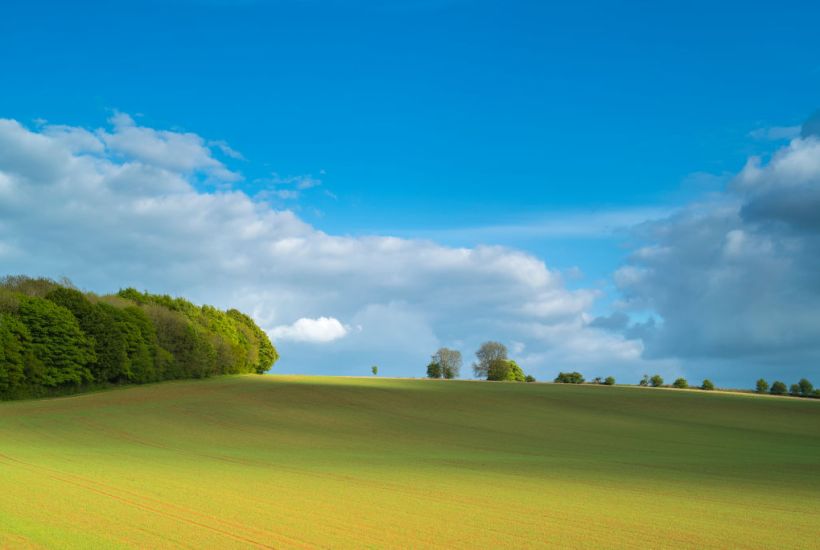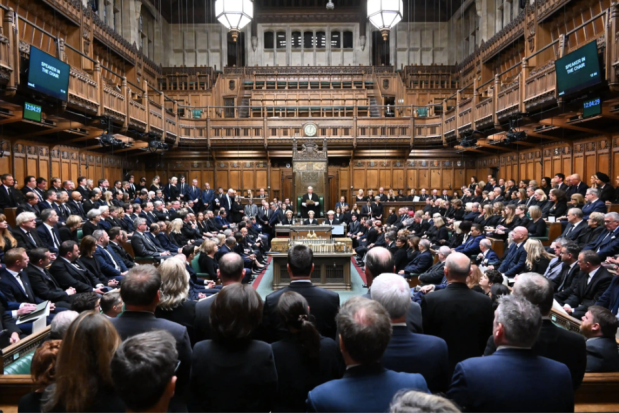What a nonsense debate the fight over the green belt has become. Today Keir Starmer has been – rightly – stoking it up arguing that councils should be given the freedom to build on green belt land. The Labour leader told the Times: ‘It cannot be reduced to a simple discussion of will you or will you not build on the green belt. This is why it’s important for local areas to have the power to decide where housing is going to be.’
The green belt holds a special, if strange, place in the British psyche. Its primary function is to prevent urban sprawl, rather than safeguard particularly green and pleasant land. While some of it is beautiful, a lot of the green belt is just green in colour. Intensively-farmed agricultural land isn’t that green at all, for example.
The distinction seems to be lost on most people. So whenever planning reforms are afoot, or even more nascent than that, politicians become very energised about ‘protecting the local green belt’ because they know exactly what their constituents envisage when that term is used.
One of the reasons for this attachment to the green belt is the origins of the term itself. It came from Octavia Hill, the founder of the National Trust and one of the pioneers of modern social housing. Hill was an extraordinary woman and campaigned to save parts of Hampstead Heath and the fells above Buttermere in Cumbria from development. She believed passionately in the importance of green spaces for everyone, especially those living in poverty. In a newspaper article titled ‘Space for the People’, she wrote rather forcefully about the difference outdoor space could make:
Sometimes on such a hot summer evening in such a court when I am trying to calm excited women shouting their execrable language at one another, I have looked up suddenly and seen one of those bright gleams of light the sun sends out just before he sets, catching the top of a red chimney-pot, and beautiful there, though too directly above their heads for the crowd below to notice it much. But to me it brings sad thought of the fact and quiet places far away, where it is falling softly on tree, and hill, and cloud, and I feel as if that quiet, that beauty, that space, would be more powerful to calm the wild excess about me than all my frantic striving with it.
Hill called for ‘places to sit in, places to play in, places to stroll in, and places to spend a day in’, and said that even costly land for housing in London had greater value as outdoor space: ‘To my mind they are even now worth very much; but they will be more and more valuable every year – valuable in the deepest sense of the word; health-giving, joy-inspiring, peace-bringing.’ In 1875, she called for a ‘green belt’ around London to stop urban sprawl into the countryside. It wasn’t until 1947 that her wish was granted, but in the Town and Country Planning Act of that year, London was strapped in to its own green belt. Today, there are 15 green belts around England, covering more than 16,000 km – or 12.6 per cent of the country’s total land area. London’s belt is the biggest, at more than 5,000 km. The majority of the land – 65.6 per cent in 2018 – is used for agriculture.
We do not have the debate we should be having about the really important green spaces
Agricultural land is essential to our country’s economy. But intensively farmed fields are, by and large, not really within Hill’s description of ‘places to sit in, places to play in’ and so on. And it is this confusion that lies at the heart of our cultural attachment to the green belt. We think it is one thing when often it is something else entirely. We have associated one thing that Hill campaigned for with another.
Even when Hill was alive, the British understanding of what wild green spaces really looked like was shifting, but in the past 50 years it has changed immeasurably as a result of the intensification of agriculture. Many of us think that the patchwork of farmed fields is the countryside, not scrub land, woods and temperate rainforests.
Our yearning for green space feeds our attachment to land that few of us have actually visited. But it lets us down as it means that we do not have the debate we should be having about the really important green spaces, whether they be parks and gardens in cities, or truly wild spaces in the real countryside. In the pandemic, access to green space suddenly became a fashionable issue, even though it had been well-documented long before Covid that access to green space was unequal and depended largely on wealth. Protecting the green belt won’t make a blind bit of difference to those living in deprived wards in England, who have five times less green space than those living in the most affluent 20 per cent of wards. Those spaces for people to live in, rather than live on either side of, are surely more important than a belt that seems to constrict us more than it helps.
Got something to add? Join the discussion and comment below.
Get 10 issues for just $10
Subscribe to The Spectator Australia today for the next 10 magazine issues, plus full online access, for just $10.





















Comments
Don't miss out
Join the conversation with other Spectator Australia readers. Subscribe to leave a comment.
SUBSCRIBEAlready a subscriber? Log in